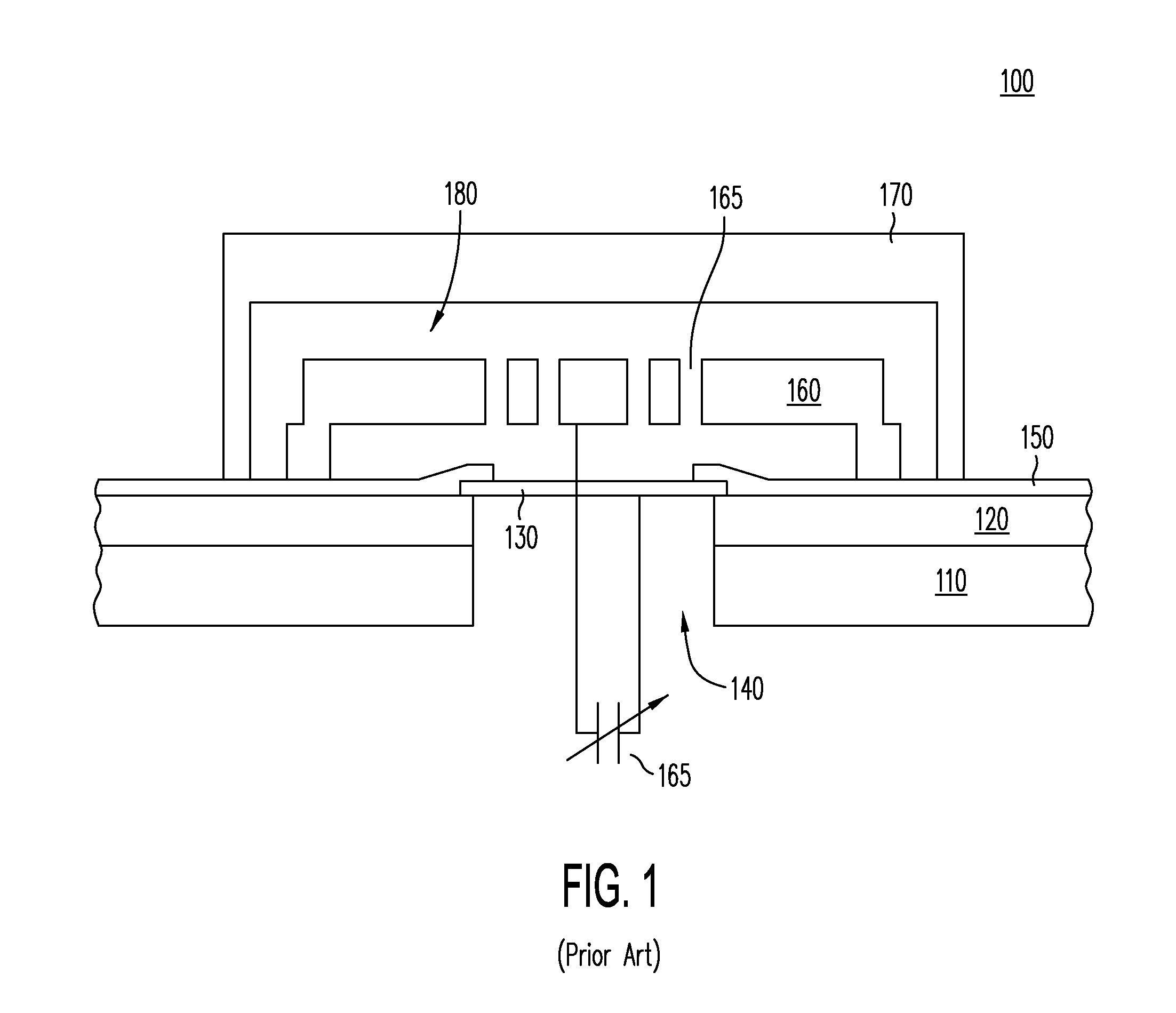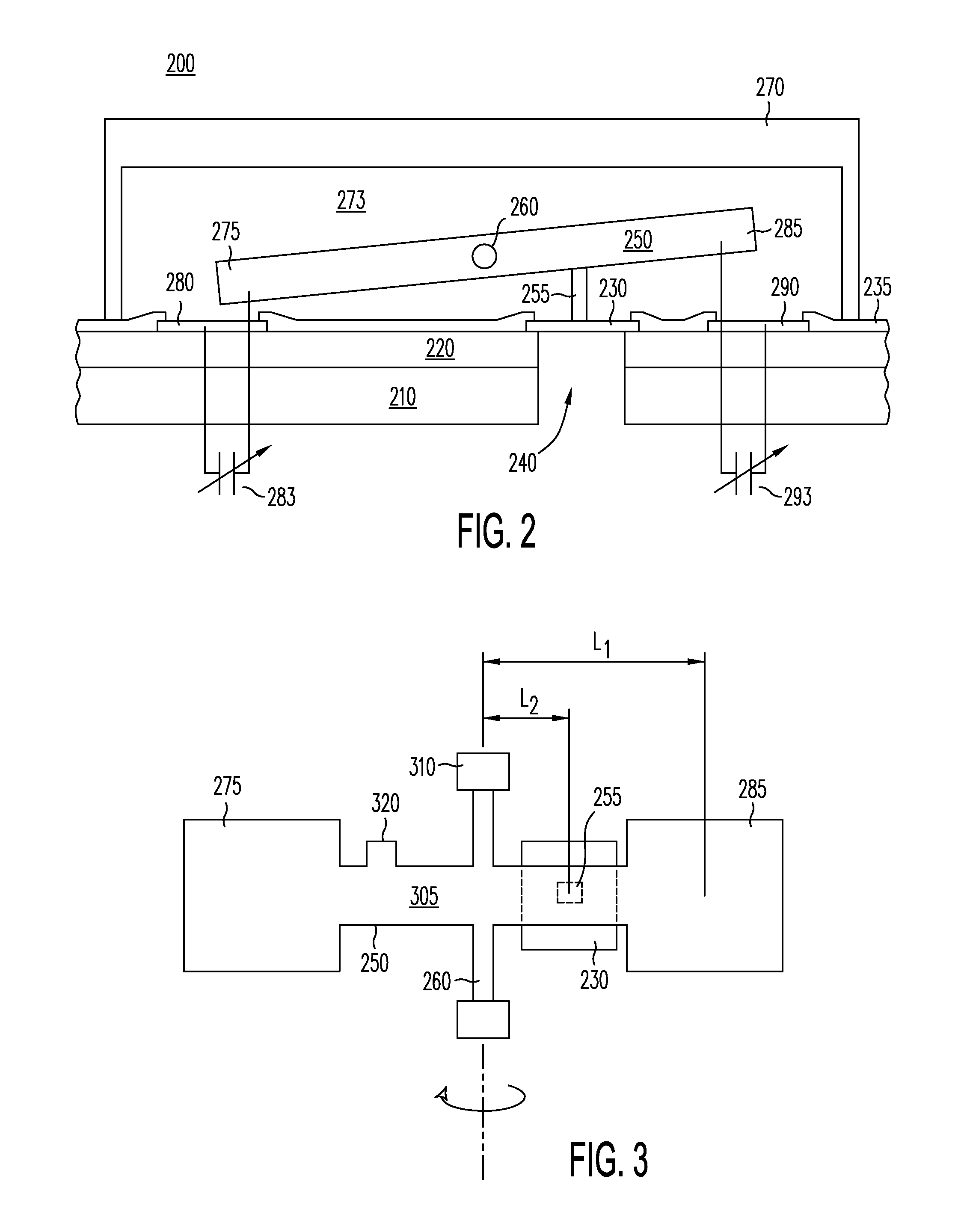Pressure sensor with differential capacitive output
a capacitive output and pressure sensor technology, applied in the field of pressure sensors, can solve the problems of non-linear change of signal and weak output signal
- Summary
- Abstract
- Description
- Claims
- Application Information
AI Technical Summary
Benefits of technology
Problems solved by technology
Method used
Image
Examples
Embodiment Construction
[0017]Embodiments of the present invention provide a MEMS pressure sensor device that can provide both a linear output with regard to external pressure, and a differential capacitance output so as to improve the signal amplitude level. Embodiments of the present invention provide these benefits through the use of a rotating proof mass (e.g., a “teeter totter”) that generates capacitive output from electrodes configured at both ends of the rotating proof mass. Sensor output can then be generated using a difference between the capacitances generated from the ends of the rotating proof mass. An additional benefit of such a configuration is that the differential capacitance output changes in a more linear fashion with respect to external pressure changes than does a capacitive output from traditional MEMS pressure sensors.
[0018]FIG. 1 is a simplified block diagram illustrating a cross sectional side view of a prior art MEMS pressure sensor. MEMS pressure sensor device 100 includes a sub...
PUM
| Property | Measurement | Unit |
|---|---|---|
| distance L1 | aaaaa | aaaaa |
| distance L2 | aaaaa | aaaaa |
| RF frequency | aaaaa | aaaaa |
Abstract
Description
Claims
Application Information
 Login to View More
Login to View More - R&D
- Intellectual Property
- Life Sciences
- Materials
- Tech Scout
- Unparalleled Data Quality
- Higher Quality Content
- 60% Fewer Hallucinations
Browse by: Latest US Patents, China's latest patents, Technical Efficacy Thesaurus, Application Domain, Technology Topic, Popular Technical Reports.
© 2025 PatSnap. All rights reserved.Legal|Privacy policy|Modern Slavery Act Transparency Statement|Sitemap|About US| Contact US: help@patsnap.com



